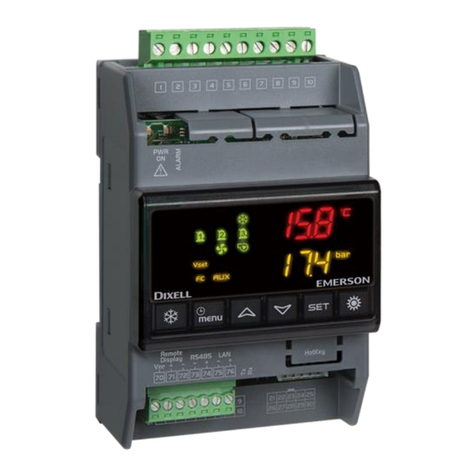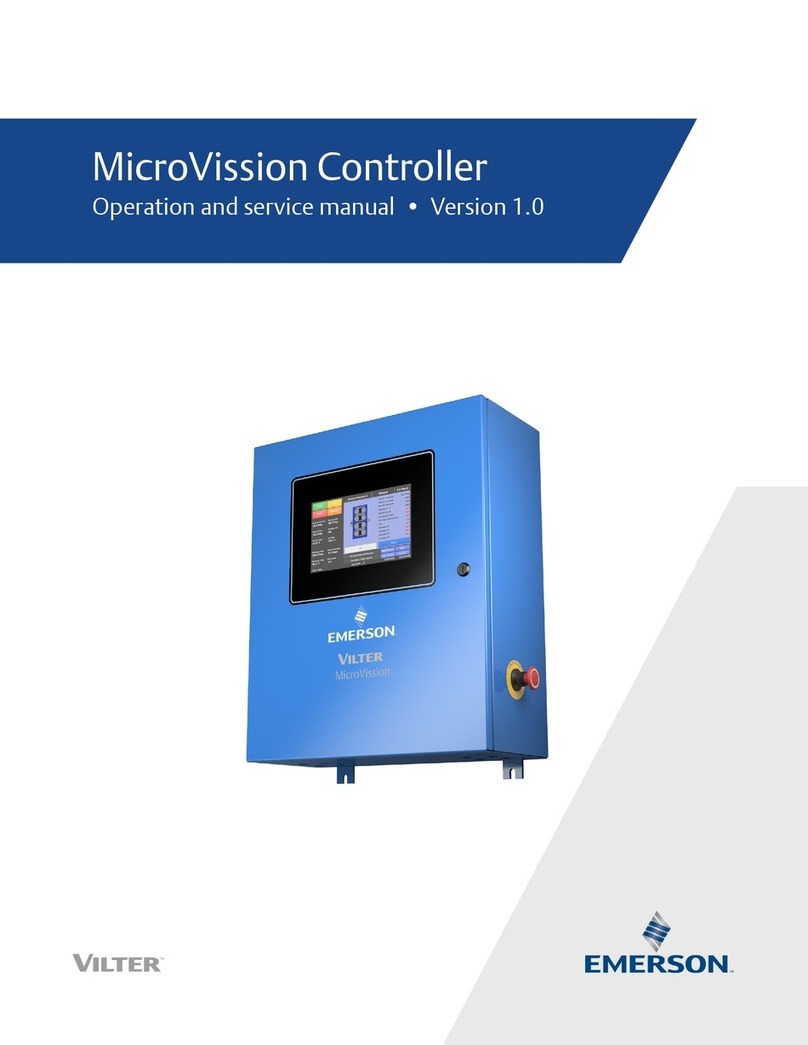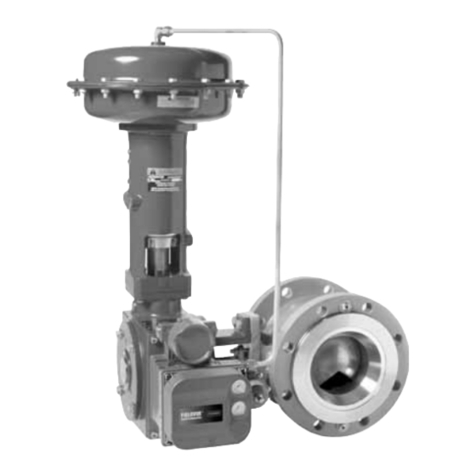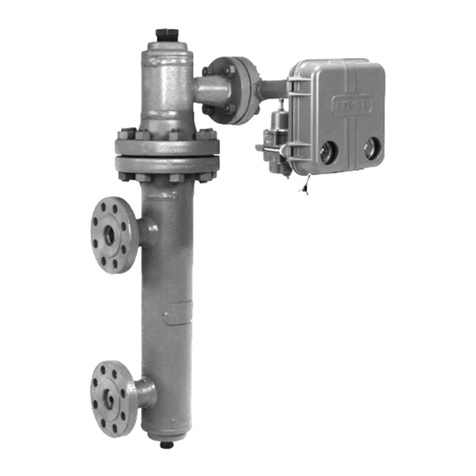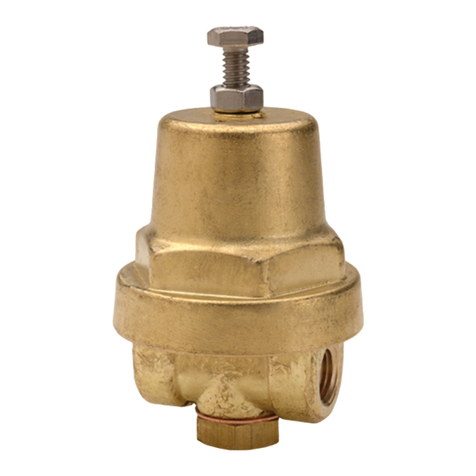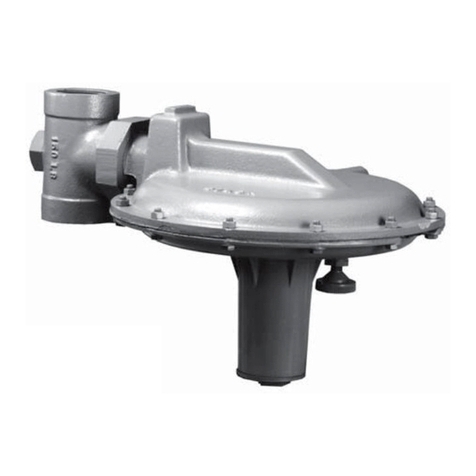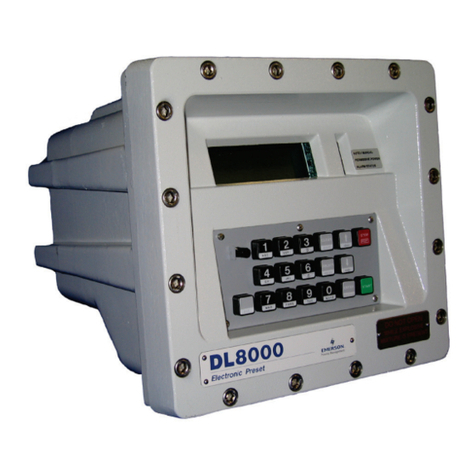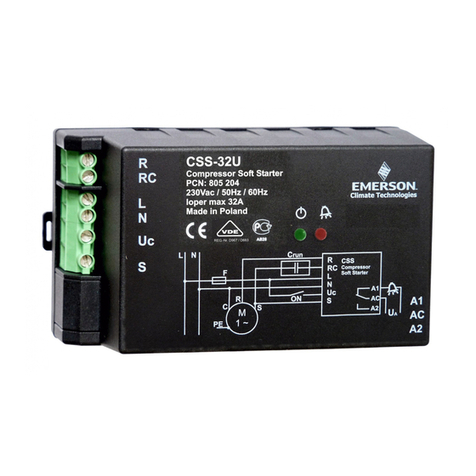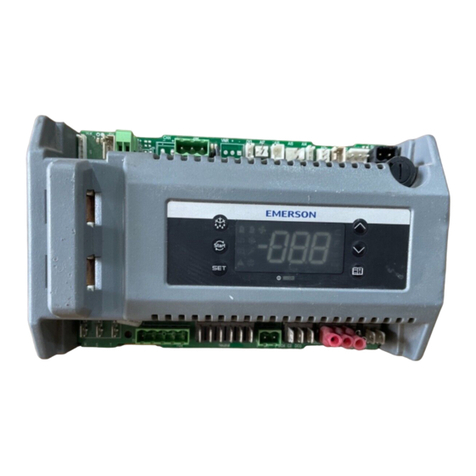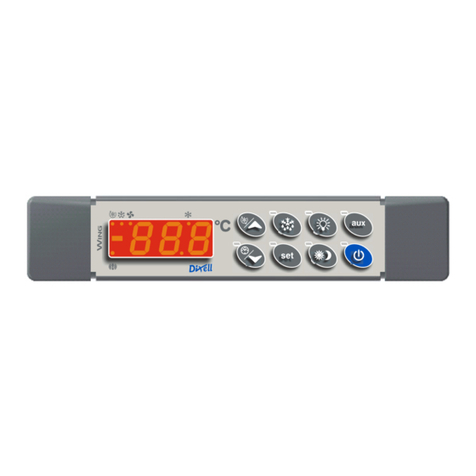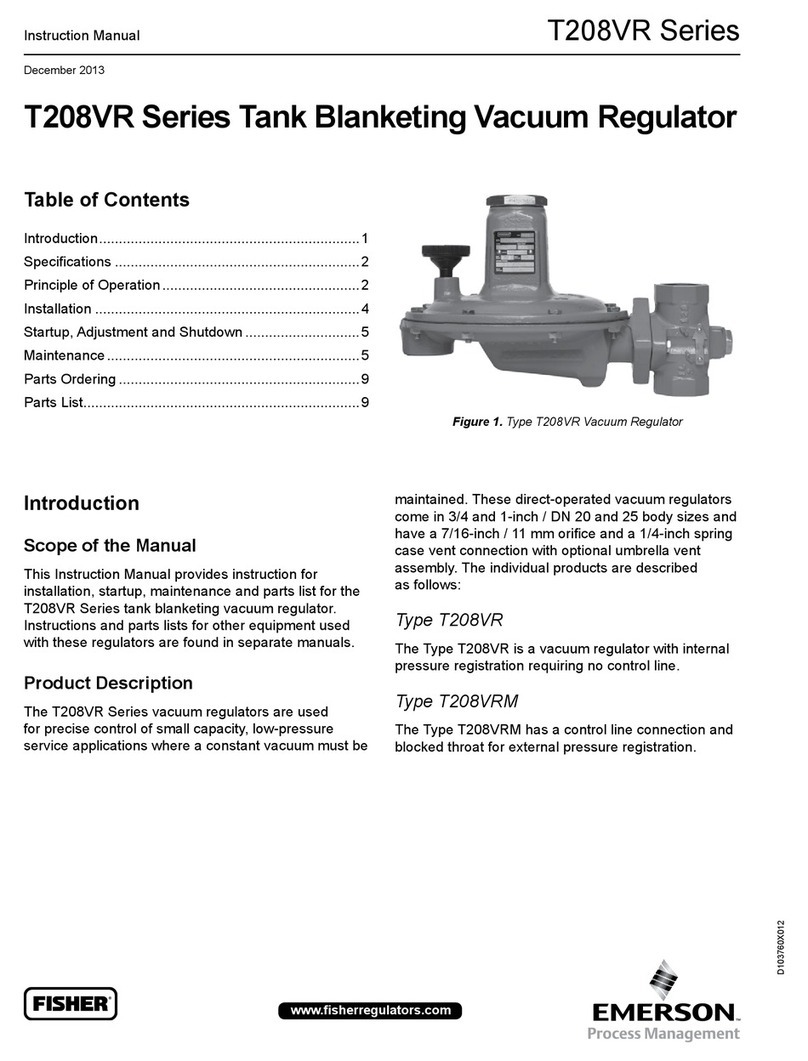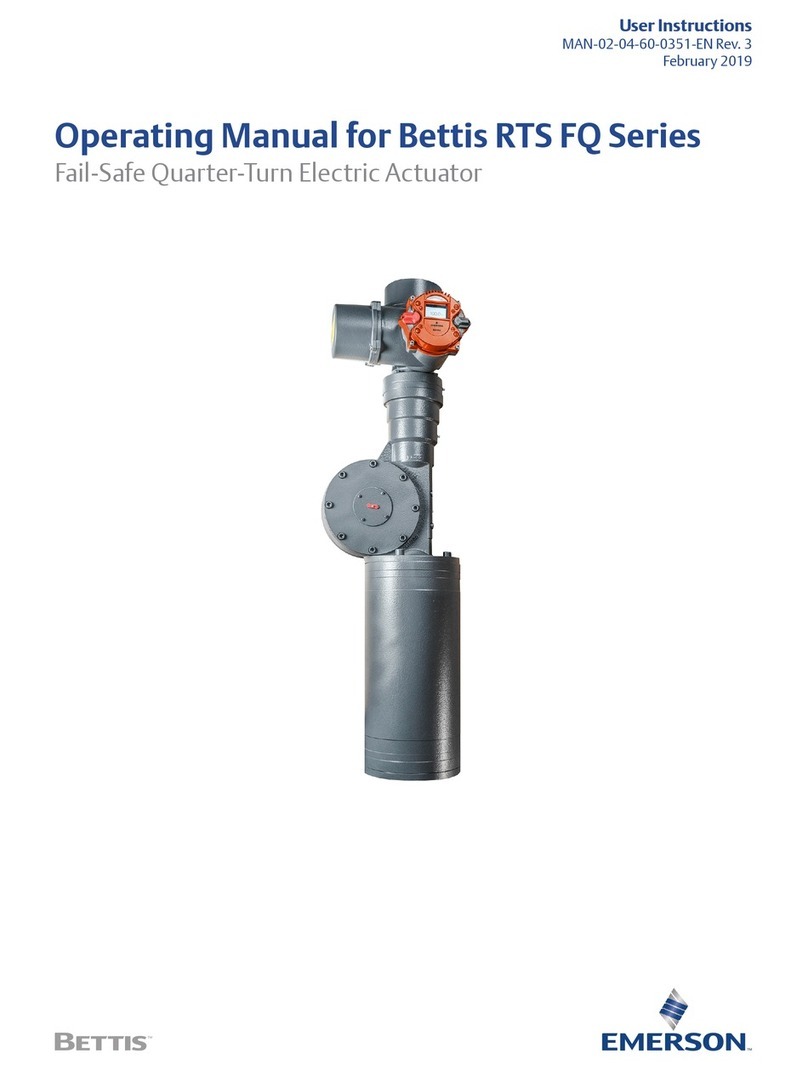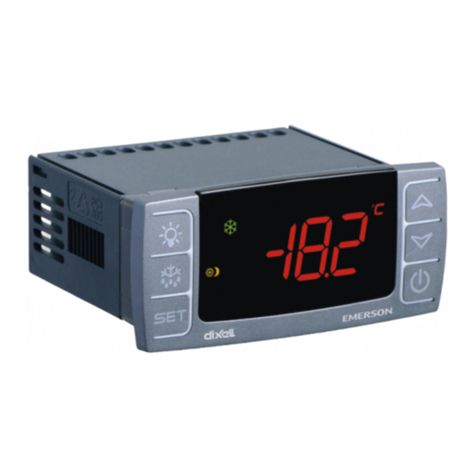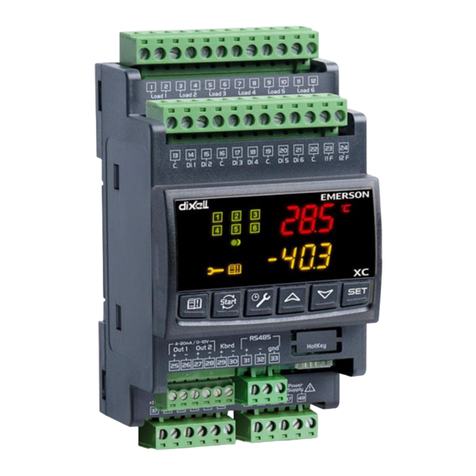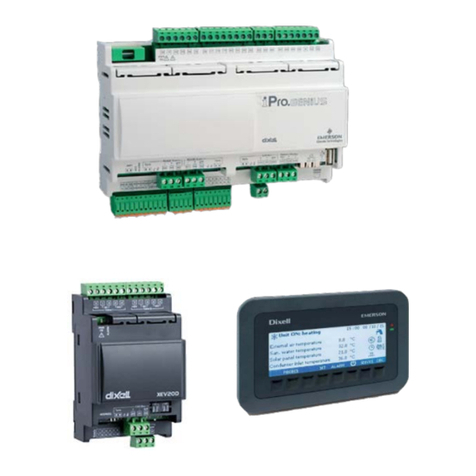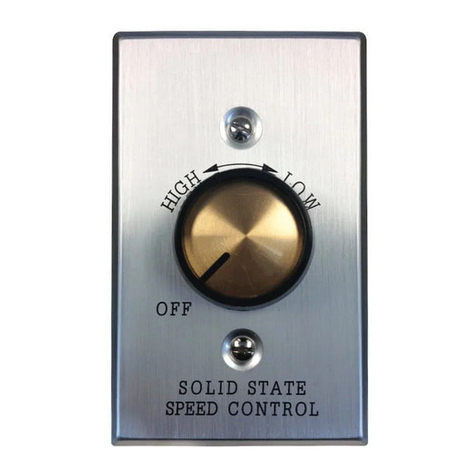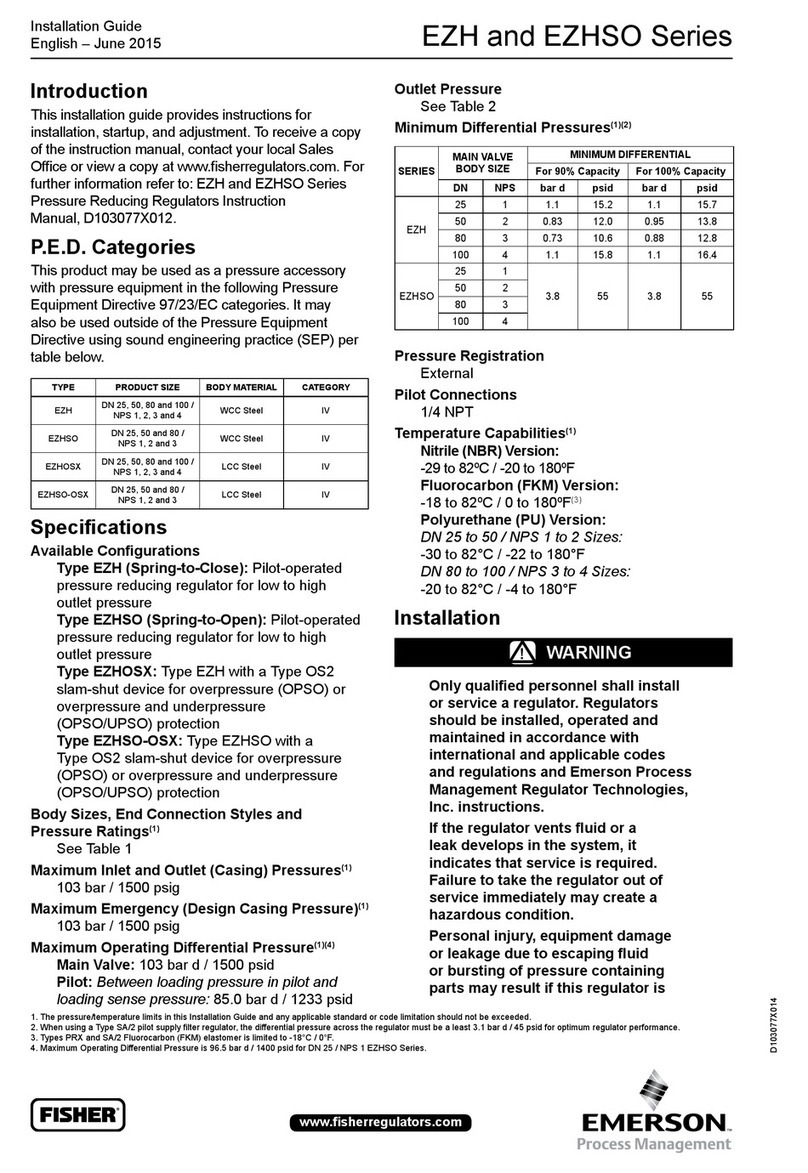
350 Actuator Instruction Manual
Form 1387
June 2002
8
rod assembly. Rotate the zero (bias spring)
adjustment screw until the piston rod just begins to
move down. Change the input signal to the opposite
end of the input signal range and check the position
of the piston rod assembly. If the rod has moved less
than full travel, it indicates that the feedback spring
has too much tension and that the span (feedback
spring) adjustment screw is screwed into the spring
too far. If the rod has moved full travel, start moving
the input signal in the opposite direction to see
where the piston rod assembly starts to move. This
indicates if there is enough spring screwed onto the
span adjustment. After each adjustment of the span
(feedback spring) adjustment screw, the zero (bias
spring) adjustment screw must be adjusted for the
starting point (full up).
Bypass Valve and Handwheel
Operation
Bypass Valve
Before using a handwheel, open the bypass valve
(key 76, figure 7) so that fluid pressure will be
equalized on either side of the actuator piston.
Failure to equalize the pressures may make
handwheel operation difficult or impossible.
Note
If the actuator is equipped with
optional lock valves, the bypass must
be opened to allow handwheel
operation even if the motor has been
turned off.
To open the bypass valve, rotate the bypass valve
stem (key 77, figure 10), located on the side of the
actuator, counterclockwise. This rotation direction is
indicated by an arrow on the bypass plate (key 79,
figure 10). Rotate the stem only enough to open the
valve (2 to 4 turns). Further rotation might damage
the bypass plate (key 79, figure 10).
Handwheels for use with the Type 354 actuator are
covered in separate manuals. Refer to the Type
1076 handwheel or other handwheel instruction
manual as appropriate.
Bolt-On Handwheels
Bolt-on handwheels (see figure 13) are available in
either of two types, non-declutchable and
declutchable. The non-declutchable type is shown in
figure 13. With this type, there is no declutching
mechanism, but the design of the handwheel nut
allows unrestricted actuator travel when the
handwheel is positioned so that the pointer (key 160,
figure 13) is at the neutral position. The handwheel
can be used to open or close the valve if used with a
Type 350 actuator (see table 7).
To operate the non-declutchable handwheel,
open the bypass valve and rotate the handwheel
clockwise to close or counterclockwise to open the
valve. The non-declutchable handwheel can also be
used as a travel stop to limit either full opening or
closing of the valve. With the handwheel pointer at
the neutral position, travel is not restricted. As the
pointer is moved from the neutral position, the
handwheel mechanism will restrict travel in an
increasing amount. Moving the pointer from the
neutral position with clockwise handwheel rotation
will restrict opening of the valve (counterclockwise
rotation will restrict closing of the valve). The
handwheel cannot be used to restrict opening and
closing at the same time.
The declutchable bolt-on handwheel is similar to the
handwheel shown in figure 13 except that the lever
pin (key 153, figure 13) is replaced by a removable
engaging pin (not shown). Unrestricted actuator
travel is possible when the engaging pin is pulled out
(engaging pin is retained by a cotter pin) and the
handwheel is positioned so that the pointer (key 160,
figure 13) is at the neutral position. The declutchable
handwheel can be used to open, close, or throttle
the valve regardless of the actuator type.
To operate the declutchable handwheel, open the
bypass valve. Rotate the handwheel to align the
engaging pin holes in the levers (key 146, figure 13)
with the hole in the handwheel body (key 142, figure
13). Insert the engaging pin. Rotate the handwheel
clockwise to close or counterclockwise to open the
valve. Install the cotter pin to retain the engaging pin.
The declutchable handwheel cannot be used as a
travel stop.
If the actuator is moved from a valve having
push-down-to-close action to one having
push-down-to-open action or vice versa, a new
handwheel nut and screw must be installed to retain
counterclockwise-to-open handwheel action. Follow
